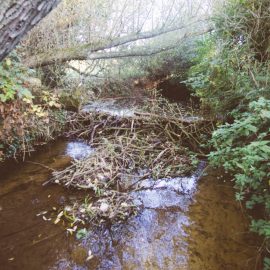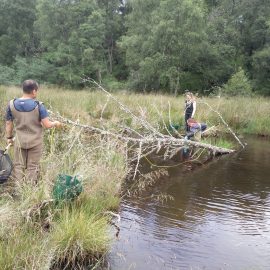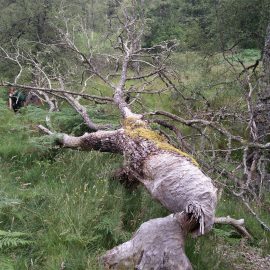As the topic of beaver (Castor fiber) reintroduction continues to gain momentum, ICER researchers are investigating the potential impacts of beaver activities on fish. Beaver dams can form temporal barriers to fish movement when flows are low, possibly inhibiting direct passage to the spawning grounds for some fish, which is a concern particularly for those that represent the interests of salmonid fisheries.
Currently, ICER researchers are assessing the ability of migrating brown trout (Salmo trutta) to pass beaver dams in both the up- and down-stream direction in Scotland. Using Passive Integrated Transponder (PIT) telemetry, tagged trout can be detected approaching monitored beaver dams. As a result, the ability of the trout to pass the dams can be quantified. The time spent negotiating the dams is recorded allowing the extent to which migration may be delayed to be better understood.
The ICER team are also comparing beaver modified habitats with those that represent reference or unmodified conditions. In addition to Scotland, this work is also being conducted in Devon (southern England) as part of the River Otter Beaver Trial. Information will allow differences in fish species composition and abundance to be assessed.
This research is funded by Scottish Natural Heritage, The Game and Wildlife Conservancy Trust, The Salmon and Trout Association, Devon Wildlife Trust and RCUK.
Media:
People:
Robert Needham
Dr. Andrew Vowles
Prof. Paul Kemp
Prof. David Sear
Dr. Gerald Müller



